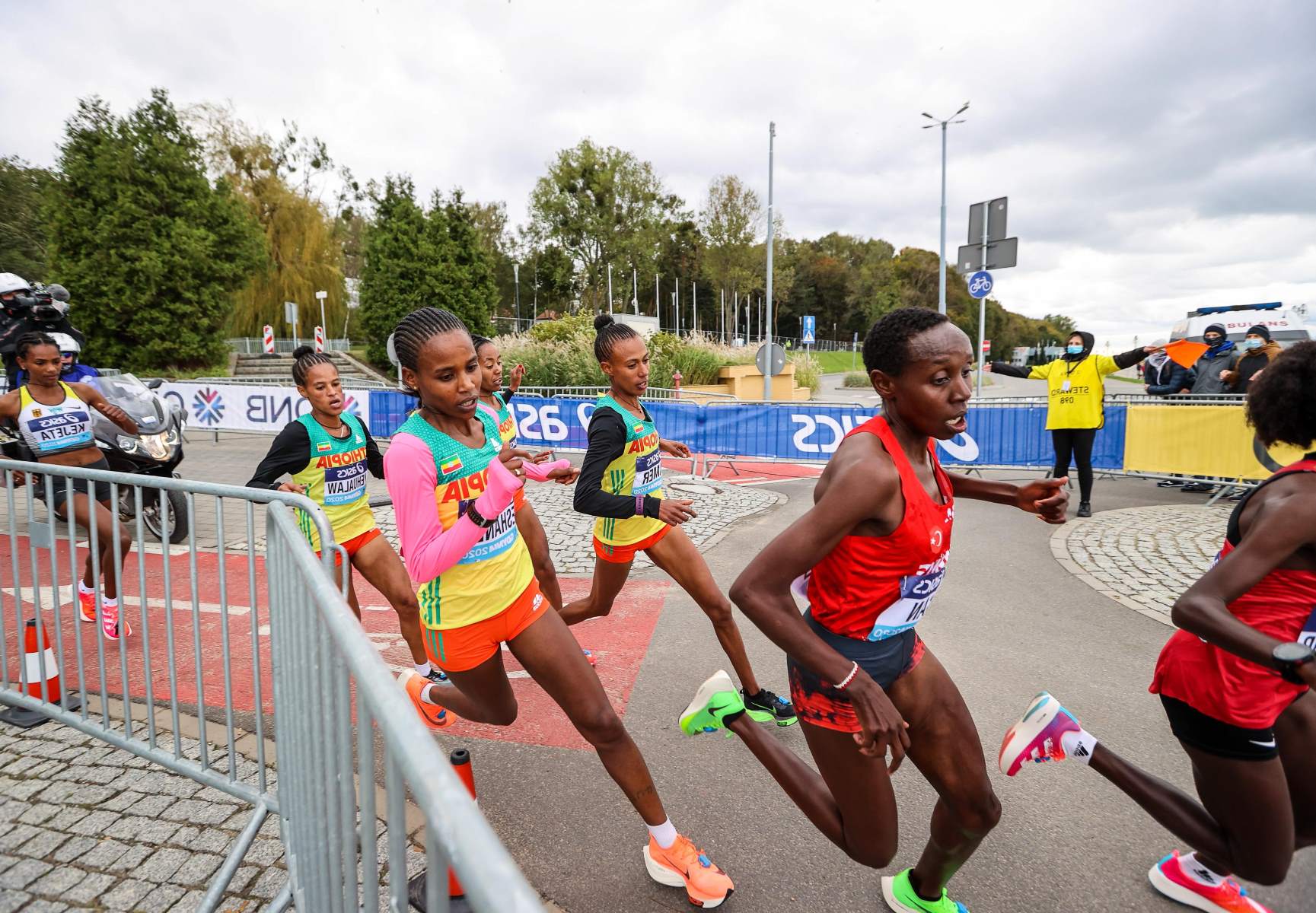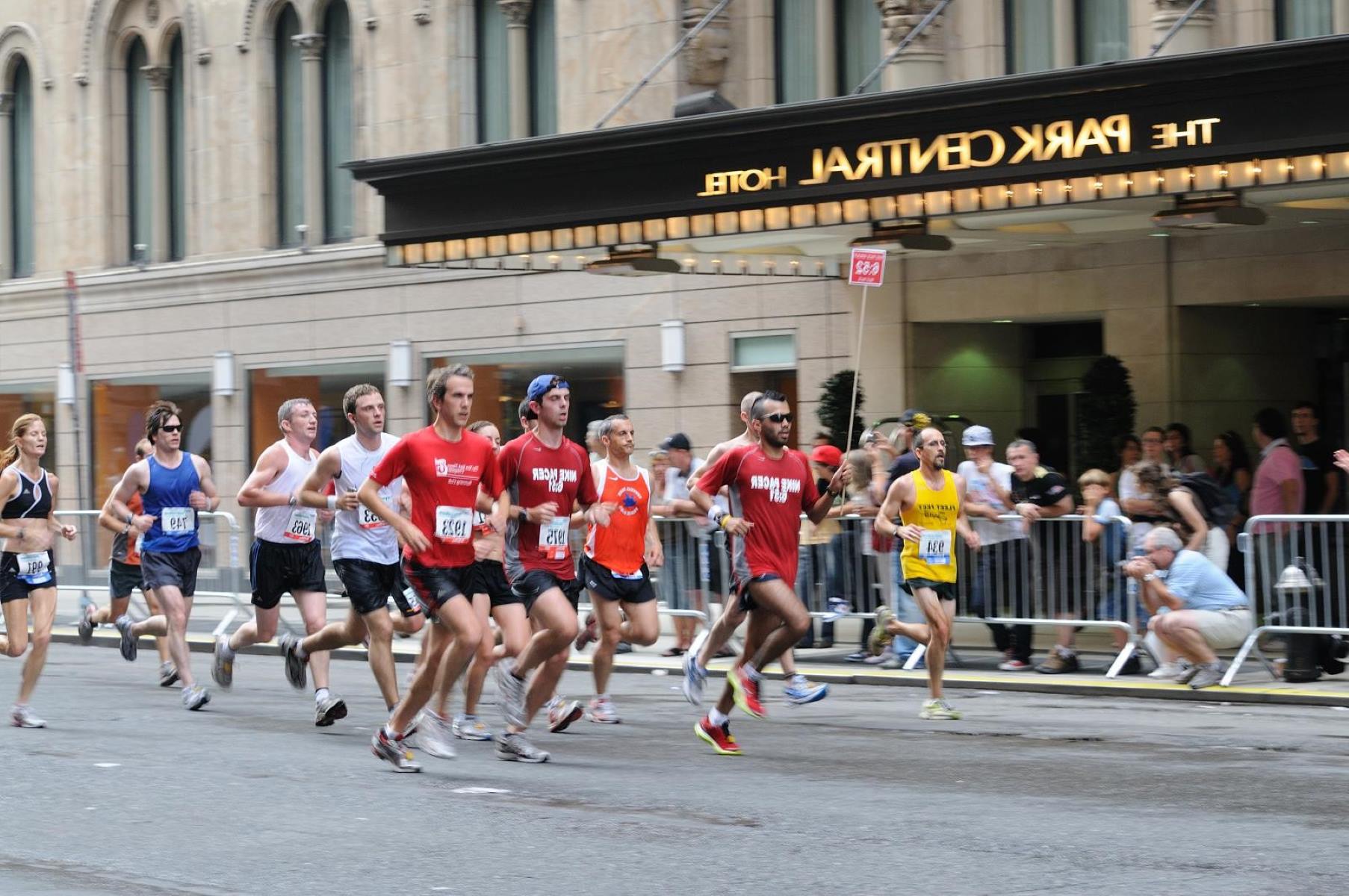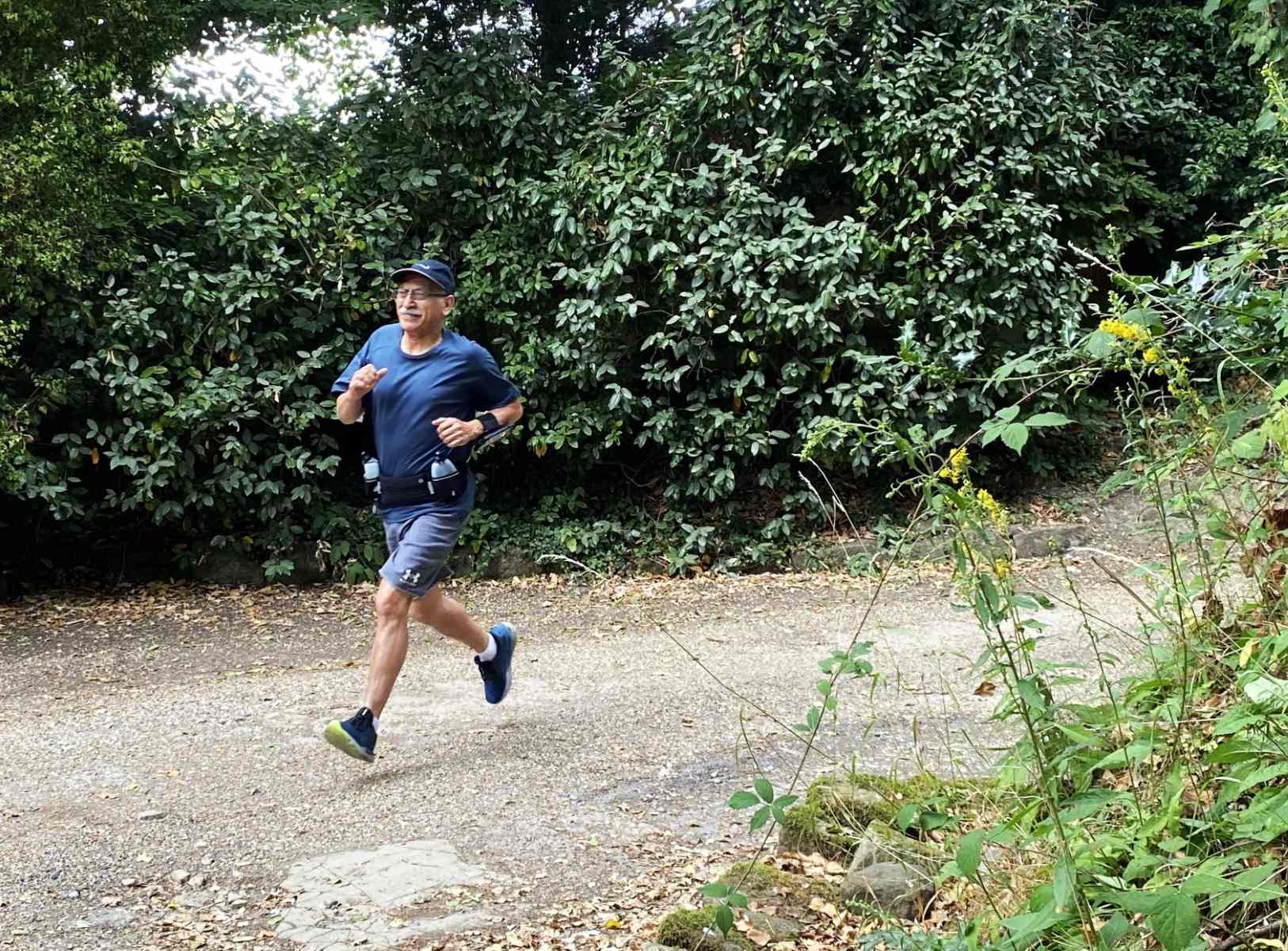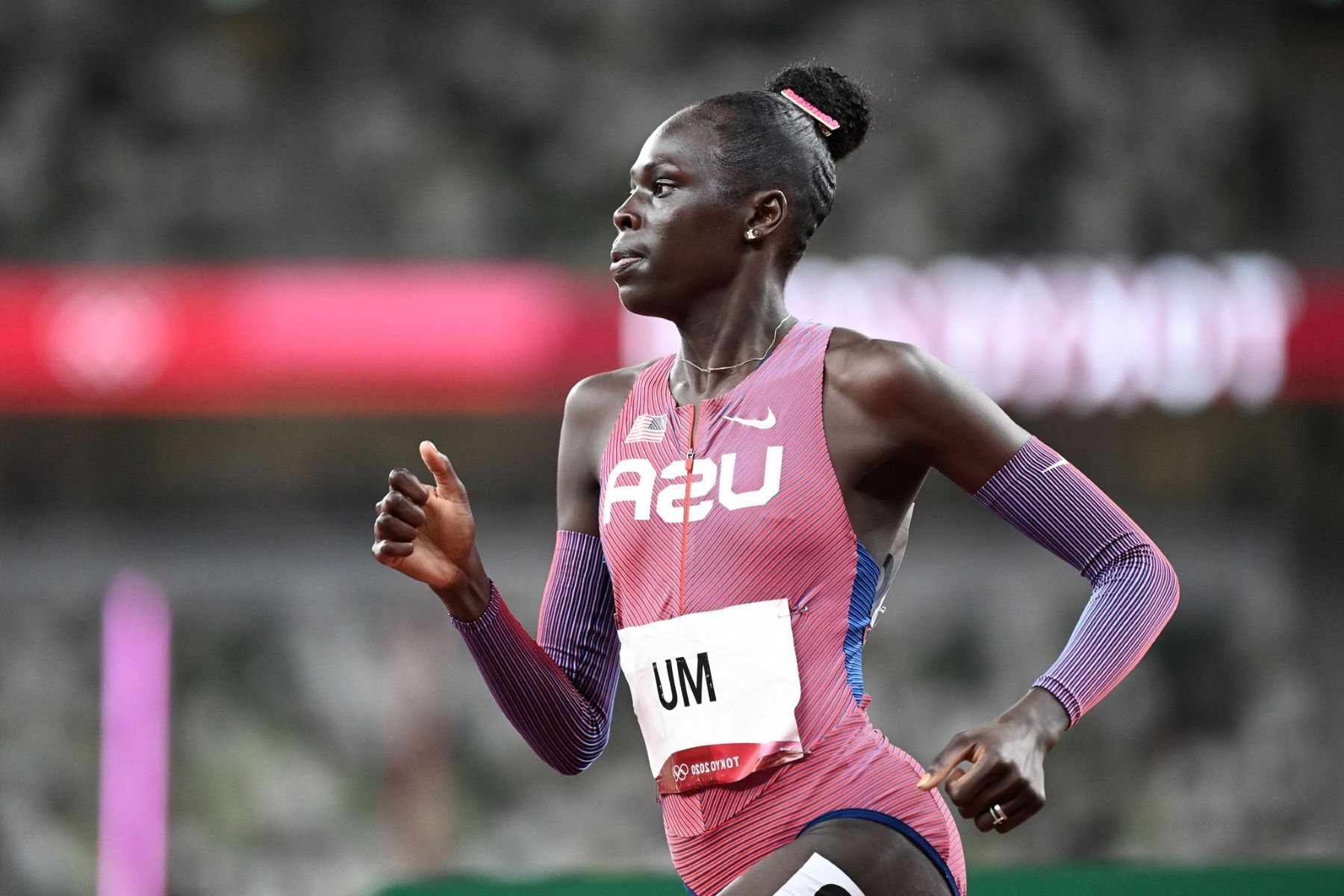Home>Training & Techniques>Training Lessons From Keely Hodgkinson


Training & Techniques
Training Lessons From Keely Hodgkinson
Published: March 4, 2024
Learn valuable training lessons and techniques from Keely Hodgkinson, a world-class athlete. Enhance your training regimen and improve your performance with expert insights. Discover the secrets to success in training and techniques.
(Many of the links in this article redirect to a specific reviewed product. Your purchase of these products through affiliate links helps to generate commission for Therunningadvisor.com, at no extra cost. Learn more)
Table of Contents
Keely Hodgkinson: A Rising Star in Track and Field
Keely Hodgkinson, a name that has been making waves in the world of track and field, has captured the attention of sports enthusiasts and professionals alike. Hailing from England, this young athlete has demonstrated exceptional talent and determination, propelling her to the forefront of the athletic arena.
At just 19 years old, Keely Hodgkinson has already achieved remarkable feats, solidifying her status as a rising star in track and field. Her breakthrough performance at the 2021 Tokyo Olympics, where she clinched a silver medal in the 800 meters, catapulted her into the global spotlight. This remarkable achievement not only showcased her extraordinary athletic prowess but also underscored her potential to become a dominant force in the realm of middle-distance running.
Hodgkinson's meteoric rise to prominence can be attributed to her unwavering dedication, relentless work ethic, and unwavering passion for her sport. Her journey serves as an inspiration to aspiring athletes, highlighting the transformative power of perseverance and commitment. By consistently pushing the boundaries of her capabilities and embracing the challenges that come with elite-level competition, Hodgkinson has set a compelling example for athletes striving to reach the pinnacle of their respective disciplines.
As a young athlete with immense potential, Keely Hodgkinson embodies the spirit of determination and resilience, serving as a beacon of hope for the next generation of track and field athletes. Her remarkable achievements and unwavering commitment to excellence have undoubtedly cemented her status as a role model for aspiring athletes worldwide.
In the competitive realm of track and field, Keely Hodgkinson's ascent to stardom serves as a testament to the transformative power of unwavering dedication, unyielding perseverance, and an unrelenting pursuit of greatness. As she continues to etch her name in the annals of athletic history, Hodgkinson's journey stands as a testament to the boundless potential that lies within the hearts of determined individuals who dare to dream and strive for greatness.
The Importance of Consistent Training
Consistent training forms the bedrock of athletic success, serving as the cornerstone upon which exceptional performance is built. For athletes striving to achieve their full potential, the significance of maintaining a regular and structured training regimen cannot be overstated. Whether it's honing technical skills, enhancing physical conditioning, or cultivating mental resilience, the benefits of consistent training permeate every facet of an athlete's journey.
At the heart of consistent training lies the concept of deliberate practice, a strategic and purposeful approach to skill development that entails repetitive refinement of technique and execution. By engaging in regular training sessions, athletes have the opportunity to fine-tune their abilities, gradually enhancing their proficiency and mastery in their chosen discipline. This iterative process of skill refinement is instrumental in fostering continuous improvement and laying the groundwork for peak performance.
Moreover, consistent training plays a pivotal role in cultivating physical resilience and endurance, essential attributes for thriving in the competitive landscape of sports. Through regular conditioning and targeted workouts, athletes can progressively enhance their strength, speed, agility, and overall physical prowess. This systematic approach to physical development not only optimizes athletic performance but also mitigates the risk of injuries, ensuring that athletes are primed to excel on the field or track.
Beyond the realm of physicality, consistent training also contributes significantly to the mental fortitude and psychological preparedness of athletes. Enduring rigorous training regimens instills discipline, focus, and mental toughness, equipping athletes with the resilience to navigate the challenges inherent in competitive sports. The ability to maintain composure under pressure, stay motivated during setbacks, and sustain unwavering determination is honed through consistent training, empowering athletes to conquer adversity and thrive in high-stakes scenarios.
Furthermore, the cumulative effects of consistent training extend beyond immediate performance gains, laying the groundwork for long-term athletic development and sustainability. By adhering to a structured training routine, athletes establish habits of discipline, commitment, and perseverance, fostering a culture of excellence that transcends individual training sessions. This enduring commitment to consistent training not only fuels short-term success but also paves the way for sustained growth and achievement over the course of an athlete's career.
In essence, the importance of consistent training cannot be overstated in the realm of athletics. It serves as the linchpin of athletic development, underpinning skill refinement, physical conditioning, mental resilience, and long-term sustainability. As athletes embrace the rigors of consistent training, they lay the groundwork for transformative growth, unwavering resilience, and the realization of their full potential on the grand stage of sports.
Building Mental Toughness in Athletics
Building mental toughness is a cornerstone of athletic success, transcending physical prowess to fortify the mindset and resilience of athletes. In the competitive arena of sports, where the margins between victory and defeat are often razor-thin, mental fortitude emerges as a defining factor that separates exceptional athletes from the rest. The cultivation of mental toughness in athletics encompasses a multifaceted approach that encompasses psychological preparedness, emotional resilience, and unwavering determination.
At its core, mental toughness empowers athletes to navigate the myriad challenges inherent in competitive sports, ranging from intense pressure and high-stakes scenarios to setbacks and adversities. It encompasses the ability to maintain focus, composure, and unwavering determination in the face of daunting obstacles, enabling athletes to rise above adversity and deliver peak performances when it matters most. This resilience is not merely a product of innate disposition but is honed through deliberate practice, psychological conditioning, and a steadfast commitment to personal growth.
The journey to building mental toughness begins with the cultivation of a resilient mindset, characterized by unwavering self-belief, resilience in the face of adversity, and the capacity to thrive under pressure. Athletes are encouraged to embrace challenges as opportunities for growth, reframing setbacks as stepping stones toward improvement rather than insurmountable barriers. This shift in perspective fosters a resilient mindset that thrives in the face of adversity, enabling athletes to confront challenges with unwavering determination and an indomitable spirit.
Moreover, the development of mental toughness in athletics entails the cultivation of emotional resilience, equipping athletes with the capacity to manage stress, anxiety, and intense emotions effectively. By honing emotional regulation skills and fostering a positive, solution-oriented mindset, athletes can navigate the psychological rigors of competition with grace and composure. This emotional resilience enables athletes to maintain clarity of thought, make sound decisions under pressure, and channel their energy toward optimal performance, even in the most demanding circumstances.
Furthermore, the cultivation of mental toughness is intrinsically linked to the establishment of effective coping mechanisms and stress management strategies. Athletes are encouraged to develop personalized routines that promote mental well-being, such as mindfulness practices, visualization techniques, and structured relaxation exercises. These tools not only serve as anchors during high-pressure situations but also facilitate the maintenance of mental clarity and focus, essential components of peak athletic performance.
In essence, the cultivation of mental toughness in athletics is a transformative journey that transcends the confines of physical training, delving into the realm of psychological fortitude and emotional resilience. By nurturing a resilient mindset, honing emotional regulation skills, and embracing effective stress management strategies, athletes fortify themselves with the mental fortitude to conquer adversity, thrive under pressure, and realize their full potential on the grand stage of sports.
The Role of Proper Nutrition in Athletic Performance
Proper nutrition stands as a cornerstone of athletic performance, wielding a profound influence on an athlete's physical well-being, endurance, and overall competitive prowess. The significance of nutrition transcends mere sustenance, assuming the pivotal role of a catalyst for optimal athletic achievement. By meticulously curating a well-rounded and nutrient-dense diet, athletes can harness the transformative power of nutrition to elevate their performance, expedite recovery, and fortify their bodies against the rigors of intense training and competition.
At the heart of the role of proper nutrition in athletic performance lies the concept of fueling the body with the essential macro and micronutrients necessary for sustained energy production, muscle repair, and overall physiological function. Carbohydrates, often hailed as the primary energy source for physical activity, play a pivotal role in replenishing glycogen stores and sustaining endurance during prolonged exertion. By incorporating complex carbohydrates into their diet, athletes can optimize their energy reserves, stave off fatigue, and sustain peak performance levels throughout training sessions and competitive events.
Furthermore, the role of protein in athletic nutrition cannot be overstated, as it serves as the building block for muscle repair, recovery, and growth. Adequate protein intake is instrumental in facilitating the repair of muscle tissue following intense workouts, promoting muscle hypertrophy, and fortifying the body against the risk of injury. By prioritizing lean sources of protein, such as poultry, fish, legumes, and dairy products, athletes can optimize their muscle recovery and bolster their physical resilience, thereby enhancing their capacity to endure rigorous training regimens and excel in the competitive arena.
In addition to macronutrients, the role of proper nutrition in athletic performance encompasses the strategic integration of micronutrients, such as vitamins, minerals, and antioxidants, into an athlete's dietary regimen. These essential micronutrients play a pivotal role in supporting immune function, mitigating oxidative stress, and facilitating the efficient utilization of macronutrients for energy production and cellular repair. By prioritizing a diverse array of fruits, vegetables, whole grains, and nuts, athletes can fortify their bodies with a spectrum of micronutrients, bolstering their overall health, resilience, and capacity to recover from the physiological demands of intense training and competition.
Moreover, the role of hydration in athletic nutrition emerges as a critical component of performance optimization, as adequate fluid intake is essential for sustaining optimal physiological function, regulating body temperature, and facilitating nutrient transport. Dehydration can compromise an athlete's endurance, cognitive function, and overall performance capacity, underscoring the imperative of maintaining proper hydration levels throughout training and competition. By prioritizing hydration as an integral facet of their nutritional regimen, athletes can safeguard their bodies against the detrimental effects of dehydration, sustain peak performance levels, and expedite post-exertion recovery.
In essence, the role of proper nutrition in athletic performance transcends the realm of sustenance, assuming the pivotal role of a catalyst for physical resilience, endurance, and peak performance. By prioritizing a well-rounded, nutrient-dense diet that encompasses the strategic integration of macronutrients, micronutrients, and hydration, athletes can fortify their bodies against the rigors of intense training and competition, thereby positioning themselves for sustained athletic excellence and optimal physical well-being.
Injury Prevention and Recovery Strategies
In the realm of athletics, injury prevention and recovery strategies assume paramount significance, serving as linchpins for sustaining peak performance, mitigating the risk of injuries, and expediting rehabilitation. Athletes navigating the rigorous demands of training and competition are inherently susceptible to a spectrum of musculoskeletal injuries, ranging from strains and sprains to more severe conditions that can compromise their athletic endeavors. As such, the implementation of comprehensive injury prevention protocols and strategic recovery strategies is instrumental in safeguarding athletes against the perils of injuries and fortifying their bodies for sustained athletic excellence.
The foundation of injury prevention and recovery strategies rests upon the cultivation of physical resilience, structural integrity, and proactive measures to mitigate injury risk. Athletes are encouraged to prioritize prehabilitation exercises, encompassing dynamic warm-up routines, mobility drills, and targeted strength training, to fortify their musculoskeletal framework and preemptively address potential areas of vulnerability. By integrating these proactive measures into their training regimen, athletes can bolster their bodies against the risk of injuries, optimize their movement patterns, and cultivate the physical resilience necessary to endure the rigors of training and competition.
Furthermore, the strategic integration of recovery modalities, such as post-exertion cooldowns, targeted stretching routines, and rehabilitative exercises, assumes a pivotal role in expediting the recovery process and mitigating the risk of chronic injuries. By prioritizing adequate rest, sleep, and recovery periods between training sessions, athletes afford their bodies the opportunity to recuperate, repair damaged tissues, and replenish energy reserves, thereby fortifying their physiological resilience and mitigating the risk of overuse injuries.
In addition to proactive injury prevention measures and strategic recovery protocols, the implementation of comprehensive injury management strategies is essential for athletes navigating the complexities of sports-related injuries. Prompt diagnosis, personalized rehabilitation plans, and access to multidisciplinary healthcare professionals, including physiotherapists, sports medicine specialists, and athletic trainers, are instrumental in expediting the recovery process and facilitating a safe return to athletic activity. By prioritizing comprehensive injury management, athletes can navigate the rehabilitation journey with confidence, expedite their recovery timeline, and mitigate the risk of recurrent injuries, thereby positioning themselves for sustained athletic excellence.
In essence, injury prevention and recovery strategies stand as pillars of athletic sustainability, fortifying athletes against the perils of injuries, expediting rehabilitation, and positioning them for sustained performance excellence. By integrating proactive injury prevention measures, strategic recovery protocols, and comprehensive injury management strategies into their athletic endeavors, athletes can fortify their bodies against the rigors of training and competition, thereby fostering a culture of resilience, sustainability, and enduring athletic excellence.
Balancing Training and Rest for Optimal Performance
Balancing training and rest is a delicate yet pivotal endeavor in the pursuit of athletic excellence. The symbiotic relationship between rigorous training and strategic rest periods forms the cornerstone of sustained performance optimization, physical resilience, and long-term athletic sustainability. Athletes navigating the demanding landscape of competitive sports are tasked with the intricate challenge of harmonizing the rigors of training with the imperative of adequate rest, thereby fostering a culture of holistic well-being, peak performance, and injury mitigation.
At the heart of balancing training and rest lies the concept of periodization, a strategic framework that entails the systematic modulation of training intensity, volume, and recovery periods to optimize athletic performance and mitigate the risk of overtraining. By integrating periodization into their training regimen, athletes can navigate cyclical phases of high-intensity training with strategic recovery periods, thereby fostering physiological adaptation, mitigating the risk of burnout, and sustaining peak performance levels over the course of their athletic endeavors.
Moreover, the strategic integration of rest and recovery periods assumes paramount significance in fortifying an athlete's physical resilience, mitigating the risk of overuse injuries, and expediting the repair and regeneration of damaged tissues. Adequate rest periods afford the body the opportunity to replenish energy reserves, repair microtrauma incurred during training, and recalibrate physiological homeostasis, thereby fortifying the body against the perils of chronic fatigue, overtraining, and compromised performance capacity.
Furthermore, the cultivation of mental resilience and psychological well-being is intrinsically linked to the strategic integration of rest into an athlete's training regimen. Adequate rest periods serve as essential anchors for mental rejuvenation, stress mitigation, and the preservation of cognitive function, thereby empowering athletes to sustain focus, motivation, and unwavering determination throughout their athletic pursuits.
In essence, the art of balancing training and rest for optimal performance transcends the confines of physical conditioning, delving into the realm of holistic well-being, physiological resilience, and sustained athletic excellence. By harmonizing the rigors of training with strategic rest periods, athletes fortify themselves against the perils of overtraining, sustain peak performance levels, and position themselves for enduring success in the competitive arena of sports.















